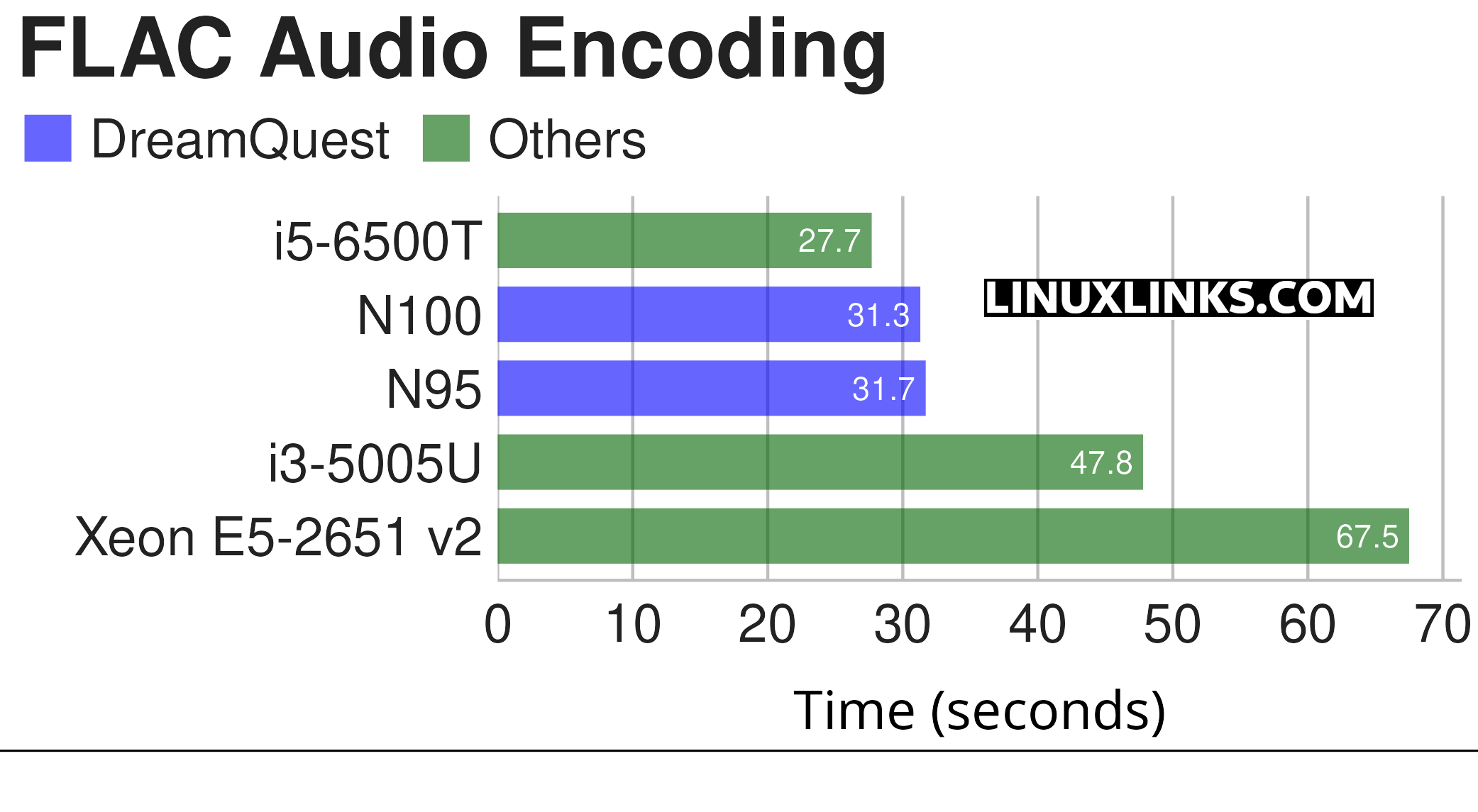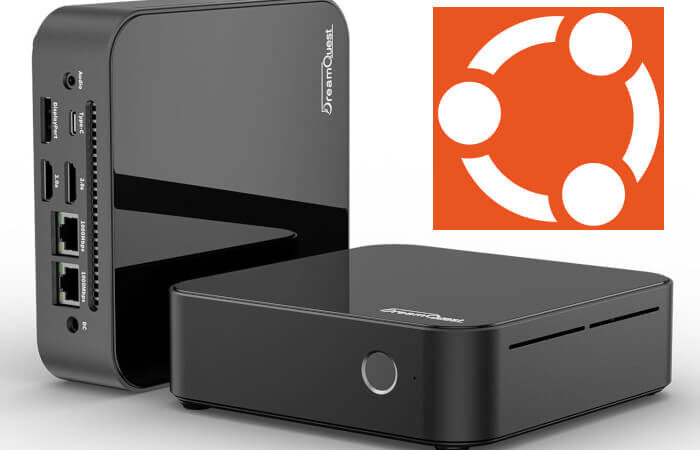This is a multi-part blog looking at a DreamQuest N100 Mini PC running Linux. The model we’re testing has an Intel N100 processor, 16GB of DDR4 RAM, and a 512GB M.2 SSD. It sounds like an inexpensive machine to run Linux.
This article benchmarks the DreamQuest N100 Mini PC running Ubuntu 24.10. The tests are run using the Phoronix Test Suite unless otherwise stated. Rather than compare the DreamQuest’s performance against processors found in modern mini PCs, we’re taking an alternative approach.
We benchmark the machine against a server/workstation, a tiny desktop PC, and a fairly old mini PC. We want to see how well the DreamQuest Mini PC might function say as a home server or as a desktop replacement. We also compare this machine to a DreamQuest N95 Mini PC we previously reviewed.
Each machine is tested with the same software and configured to ensure consistency between results. All power management functionality is disabled when running the benchmarks. The performance scaling governor is used for all tests. For ease of reference, the system’s specifications are listed on the final page together with links to the other articles in this series.
Let’s start with some general system tests.

$ phoronix-test-suite benchmark build-linux-kernel
The benchmark show how long it takes to build the Linux 6.8 kernel in a default configuration. The test uses all cores/threads of a PC, but it’s not the type of test where CPU cores run at 100%. A lot of the time, the compiler is waiting on other things like RAM and disk. It’s therefore a good indicator of the general system performance of a machine.
The DreamQuest N100’s results are mighty impressive for a CPU with a mere 6W TDP. Contrast that with the Xeon and HP i5-6500T machines which are 105W TDP and 35W TDP respectively. The N100 actually beats the HP desktop machine in this test by a significant margin. Of course, the Xeon machine compiles the kernel quicker courtesy of its much higher number of cores (it’s a 12 core 24 thread machine).

$ phoronix-test-suite benchmark encode-flac
The DreamQuest N100 is only slightly slower than the HP desktop machine, and obliterates the Xeon. The benchmark only uses a single core. The Xeon is even beaten comfortably by the i3-5005U Mini PC which highlights the deficiencies of the Xeon CPU with software running on a single core.
This benchmark indicates that the DreamQuest N100 machine will make a fine home server or as a desktop machine given that for most of the time some of its cores will not be fully utilised.
Let’s move on to benchmarks that focus more on the processor.
Pages in this article:
Page 1 – Introduction / System
Page 2 – Processor
Page 3 – Memory / Graphics
Page 4 – Disk / WiFi
Page 5 – Specifications
Complete list of articles in this series:
| DreamQuest N100 Mini PC | |
|---|---|
| Part 1 | Introduction to the series with an interrogation of the system |
| Part 2 | Benchmarking the DreamQuest N100 Mini PC |
| Part 3 | Power Consumption and Running Costs |

excellent article, did not know what phoronix tests to run
want to benchmark G3258 vs N100
Thanks.
Why not start with repeating the benchmarks we run in this article? We include the command for each benchmark. Post your results in the comments as it may be useful for others.